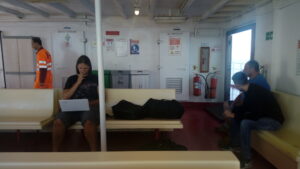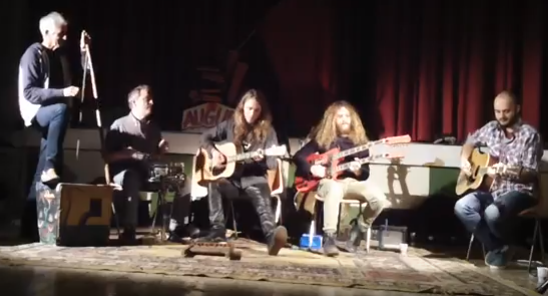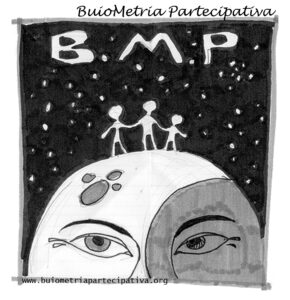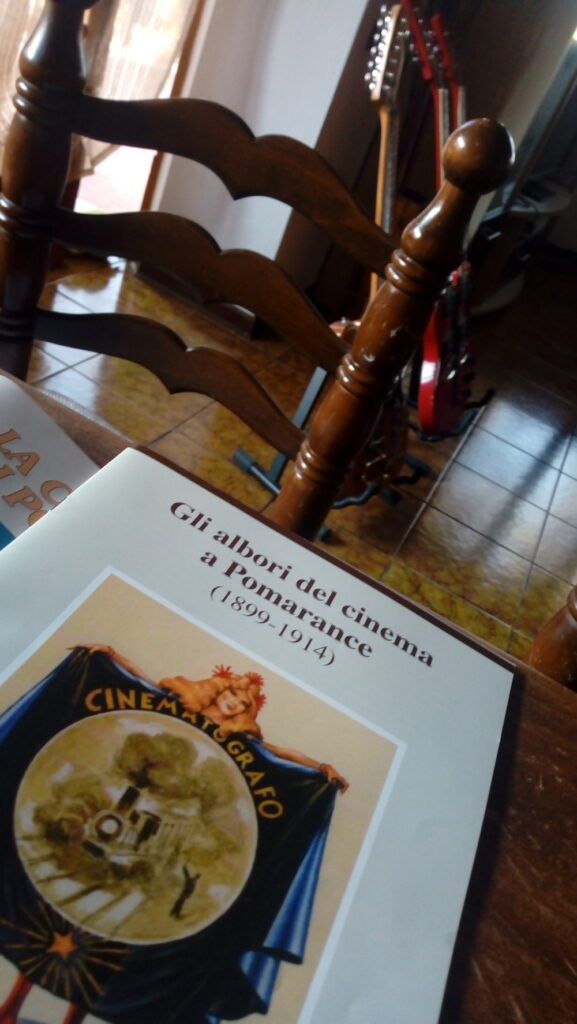CPNS2018-3/28: A Spectroscopic Analysis of Light Pollution at the Asiago Observatory
[This article is part of the “Capraia Night Sky Symposium, reloaded” series – check this introduction to learn more]
S. Ortolani1,2, A. Bertolo3, S. Cavazzani4,5, P. Ochner6,7
1Department of Physics and Astronomy, University of Padova, Vicolo dell’Osservatorio 2, 35122 Padova, Italy
2INAF, Osservatorio Astronomico di Padova, Vicolo dell’Osservatorio 5, 35122 Padova, Italy
sergio.ortolani@unipd.it
3Regional Agency for Environmental Protection and Prevention, Veneto, Department of Padova,Via Ospedale Civile 24, 35121 Padova, Italy
andrea.bertolo@arpa.veneto.it
4Department of Physics and Astronomy, University of Padova, Vicolo dell’Osservatorio 2,
35122 Padova, Italy
5INAF, Osservatorio Astronomico di Padova, Vicolo dell’Osservatorio 5, 35122 Padova, Italy
stefano.cavazzani@unipd.it
6Department of Physics and Astronomy, University of Padova, Vicolo dell’Osservatorio 2, 35122 Padova, Italy
7INAF, Osservatorio Astronomico di Padova, Vicolo dell’Osservatorio 5, 35122 Padova, Italy
paolo.ochner@unipd.it
Abstract
We present the spectra evolution of the sky at Asiago Astronomical Observatory form an unprecedent archive collected in the last half century. They will be compared with typical city lamp spectra. The artificial light pollution spectral evolution during the night is also investigated and its impact on astronomical observations is briefly discussed.
Keywords: light pollution, site testing, night sky spectra, aurora lines, sodium lines

CPNS2018-2/28: Incorporating Light Pollution into Cumulative Effects Assessment in Coastal Areas of the Italian Adriatic Sea
[This article is part of the “Capraia Night Sky Symposium, reloaded” series – check this introduction to learn more]
D. Depellegrin (1) , M. Drius (1) , S. Menegon (1),
G. Farella (1) , L. Zaggia (1) , F. Falchi (2) , A. Pugnetti (1) ,
L. Bongiorni (1)
(1) Institute of Marine Sciences, National Research Council
(ISMAR-CNR), Arsenale – Tesa 104, Castello 2737/F,
30122, Venice, Italy
(2) ISTIL – Light Pollution Science and Technology Institute,
Via Roma, 13, 36016, Thiene, Italy
daniel.depellegrin@ve.ismar.cnr.it, lucia.bongiorni@ismar.cnr.it
ABSTRACT
Artificial light at night (ALAN) from coastal urban areas represents
a direct threat to marine organisms as it can affect their natural
behaviour, migration and reproduction, and it may interfere
with community interactions such as competition or predation.
Despite increasing research activities on assessing ecological
consequences of ALAN, the overall effects of this threat on marine
ecosystems remain largely unknown. Besides, ALAN can interact
with other human stressors contributing to multiple impacts on
marine ecosystems. In order to adequately assess the cumulative
effects of human stressors to marine biota, it is therefore essential
to integrate ALAN into decision support systems including impact
assessment models.
 An advanced model for coastal light pollution
An advanced model for coastal light pollution
assessment, based on expert elicitation and on a spatially detailed
artificial night sky brightness dataset, is presented and tested for
coastal areas of the Italian Adriatic Sea. Effects on marine organisms
(e.g. turtles) are mapped and discussed for their ecological
relevance, importance within multiple environmental impacts, as
well as for their significance for coastal management and planning.
KEYWORDS: light pollution, coastal ecosystems, cumulative impacts, modelling,
Adriatic sea
Italian translation by Lucia Bongiorni
Image source: Wikipedia (Adriatic Sea)
Artisti a rimessa (Loser Artists)
A recent installation found in one of the hamlets in the Metalliferous Hills in Southern Tuscany (Roccatederighi). By the same autor of another sculpture called “meglio un cane come amico che un amico cane” (a dog as a friend is better than a friend acting like a dog).

The Capraia Symposium on Protection and Promotion of the Night Sky, reloaded
After the international symposium on the protection and promotion of the night sky held on Capraia Island, Tuscany, Italy on Sep. 13-14 2018 (see report), with the BuioMetria Partecipativa project we decided to republish an “augmented” version of the symposium proceedings.
From the pibinko.org blog we will issue the abstract of each presentation, together with its Italian translation. For authors who are not Italian or English mother tongue, where possible we will also provide the translation of the abstract in their mother tongue, as an additional outreach exercise.

The symposium presentations were 28. We will make the abstracts available more or less daily, with the cpns2018 tag, together with some photo coverage taken during the mission to Capraia.
The original version of the book of abstracts can be downloaded from the symposium website.
The order of the presentations from the blog will not follow the actual symposium schedule, and we start with Andrea Eugenio Gini from Lucca, Italy, and his overview on The ALAN phenomenon in the broader frame of urban evolutionary ecology
With this series of articles we hope that interested followers will get to know a bit more in depth the experiences shared during the symposium, and will obtain a broader view concerning artificial light at night, especially from the standpoint of ecology and natural resource management.
For more information: bmp@pibinko.org
CPNS2018-1/28: The ALAN phenomenon in the broader frame of urban evolutionary ecology�
A. Gini (1,2), M. A. L. Zuffi (2)
(1) Via A. Gramsci 191, 55100 Lucca (Lucca), Italy – andreaeugenio.gini@gmail.com
(2) Museo di Storia Naturale, Università di Pisa, via Roma 79, 56011 Calci (Pisa) – Italy – marco.zuffi@unipi.it
Abstract
Artificial light at night (ALAN) is a threat to ecosystem, which due to
urbanization it is increasing globally. This review is part of a wider
project proposal of evolutionary ecology in urban and peri-urban
populations of the Italian fauna. Here we provide an overview of
the effects of light pollution on a plethora of organisms, as well as
of ecosystem functions. Cloud cover can increase the area where
light irradiance arrives, potentially affecting peri-urban habitats
like wetlands. Polluted aerosols and the different thermal regimes
of cities can increase the phenomenon of cloud cover, directly
amplifying ALAN.
Light alters both physiology functions like metabolism, circadian
rhythms and behaviours like activity and interactions. This
alteration in a wetland area can potentially affect the entire
ecology of zooplankton, aquatic insects, urodeles, and anurans.
Another common effect of ALAN is the attraction of nocturnal
insects, especially moths. They can provide a window to small-
scale evolutionary and trophic alteration studies, because they
affect the diet of their predators and the delicate equilibrium of
the ecosystem. Lastly, an augmented presence of light can alter
the effects of communication signals, or create new ones. Visual
communication mediated by colours, shapes, and signals is very
common between animals, especially for courtship. Light can
dimmer the contrast between the environment and an organism,
blinding the communication, but can also exacerbate a shape or a
reflectance colour in camouflaged animals.
All of these phenomena participate with many others in the
differentiation of the urban environment, and they are all necessary
to enlighten how the evolution acts in their ecology.
KEYWORDS: ALAN, urban ecology, evolution, natural selection, adaptation,
environment.

Jolene and the metalliferous spiderdog
Die Jug Band der metallreichen Hügel
Die Band ist ein musikalisches Kollektiv das seinen Ursprung 2017 im folgenreichen Zusammentreffen mit den ‚Etruschi from Lakota‘ (einer jungen Rockband in der südlicheren Toskana mit 3 veröffentlichten Alben und Auftritten in ganz Italien), einigen ‚Wilden Vagabunden‘ mit internationalen Erfahrungen die seit gut 10 Jahren in der gleichen Gegend leben, und wechselnden Gästen.
Die Mitglieder der Band verbindet die Passion für Musik, die Tatsache des Lebens und Arbeitens in einer eher verlassenen Gegend Italiens – den toskanischen metallreichen Hügeln – und das Interesse andere auf die weniger bekannten Schätze und Geschichten aufmerksam zu machen. Die Band tritt auf wo Live-Music gespielt wird, aber auch bei weniger ‚normalen‘ Gelegenheiten wie zum Beispiel bei wissenschaftlichen Konferenzen.
Die MHJB tritt mit verschiedensten Instrumenten auf die Bühne: Gesang, Gitarren, Banjo, Bouzuki, Percussion, Schlagzeug, Waschbrett, einsaitigem Zupfbass und Jug. Plus allem möglichen was Gäste mitzubringen haben. In der letzten Zeit waren das Violine und Percussion.
- Um mehr über die MHJB zu erfahren gibt es diesen link.
- Um die MHJB zu buchen ist diese Adresse hilfreich: info@pibinko.org

Fernando Tizzi about Men, Animals, and Rurality
Here’s a petition to the European Parliament on light pollution, for you to consider..
…and maybe sign.
 Since 2008 with the BuioMetria Partecipativa project we work on protection and promotion of night sky as a resource and on awareness raising on light pollution.
Since 2008 with the BuioMetria Partecipativa project we work on protection and promotion of night sky as a resource and on awareness raising on light pollution.
Since 2013 we collaborate with various organisations in Europe on the same topics. Some of these organisations, currently active on the Stars4all project, have drafted a petition to the European Parliament, advocating a European Directive on light pollution.
With the BuioMetria Partecipativa project, in over eleven years we held almost 130 outreach events at various latitudes, obtained recurring national media coverage, conducted scientific activities, contributed to the creation of networks involving citizens, public and private sector organisations. Above all, we invited a lot of people to think about how much light (and which lights) they use. We are writing primarily to those who followed us on the events, and more in general to whoever is interested to the light pollution topic.
We encourage you to review the petition drafted by th Stars4all team. If you agree, sign it, and let us know you did (please write to bmp@pibinko.org). If you don’t agree with the petition, or you have any doubt, we would like to hear from you (again, write to bmp@pibinko.org).
Recommended steps
- Check out the full petition text
- Register on the European Parliament petition portal
- Once you have registered, log in to the petition portal, go to the petition page (look for n. 362/2018, or click here once you are logged in to go there directly) and click on the bottom right button to sign the petition.
- Write to bmp@pibinko.org to let us know how it went
